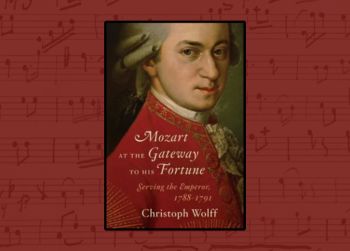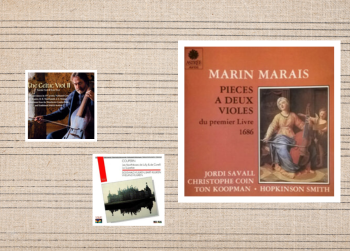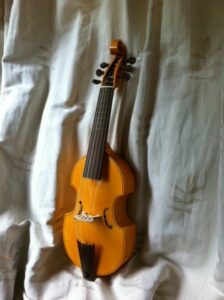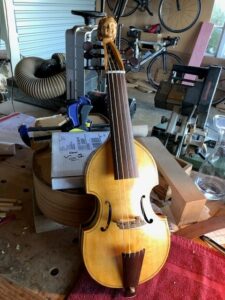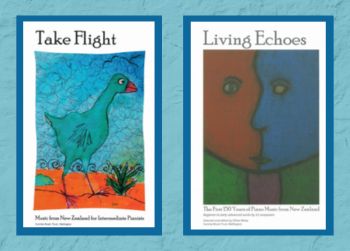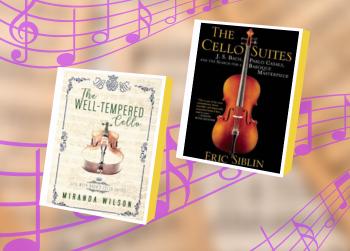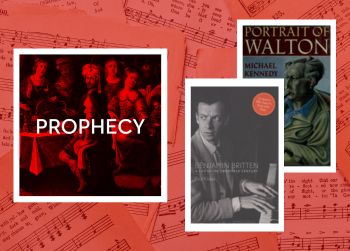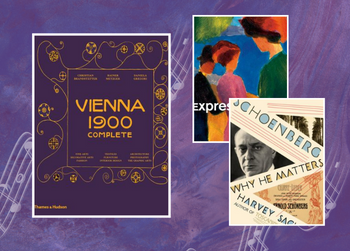Continuing the series of posts that explore links between the WCL music collection and Orchestra Wellington’s 2023 Inner Visions season, today’s blog investigates the connections between their July concert ‘Three Colours‘ and books about Arnold Schoenberg (Five Pieces for Orchestra) and Gustav Mahler (Das Lied von der Erde) whose music frames the programme. In between these pieces, sits Richard Strauss’s Burleske for piano and orchestra, an exuberant work of the composer’s youth.
Burleske, which will feature Jian Liu playing the mercurial solo part, dates from 1885-1886 when Strauss was 21 years old. At the time of Burleske‘s genesis, Strauss had completed his tenure as Hans von Bülow’s assistant with the Meiningen Court Orchestra, and was deep in the phase of his ‘Brahms Adoration’. Burleske offers some unabashedly Brahmsian moments, but Strauss’s musical identity — which would be realized more fully in a few years, with Don Juan — is entirely clear. In fact, by the time Burleske had its premiere in Eisenach in 1890, the public had already been introduced to Don Juan in Weimar, a performance that cemented Strauss’s reputation as a leader of the avant-garde.
Strauss wrote Burleske for Hans von Bülow to perform as soloist, but the veteran pianist and conductor did not warm to the piece, writing to Brahms in January 1891 that ‘Strauss’s Burleske decidedly has some genius in it, but in other respects, it is horrifying.’ Strauss himself came to view the piece as something of an aberration, but despite his doubts, Burleske endured: in 1947, a festival dedicated to Strauss and his music was held in London, and the 83-year-old composer conducted a performance by the Philharmonia Orchestra, the programme consisting of Burleske, Don Juan, and Symphonia Domestica. You can read more about Strauss’s life and music in an earlier blog post.
The first performance of Schoenberg’s Five Pieces for Orchestra also took place in London, at one of Sir Henry Wood’s Promenade Concerts in the Queen’s Hall. The orchestra had never encountered such music, and Wood devoted an almost unprecedented amount of rehearsal to the Five Pieces, ‘three consecutive rehearsals of an hour each,’ as Eugene Goossens (then a violinist in the Queen’s Hall Orchestra) remembered:
Wood, cutting, thrusting, parrying, and dissecting with that long white baton, fighting down the thing that all conductors have to fight sooner or later in varying degrees – the hostility of an orchestra that has fatally prejudged a novelty – eventually secured order out of chaos.” Eugene Goossens, The New York Times, 3 September 1944
Despite Wood’s meticulous preparation, the audience at the premiere on 3 September 1912 was hostile, derisive, and baffled. Undeterred, Wood invited Schoenberg to come to London in January 1914 to conduct a second performance, and this received a far better reception: a note included in the programme stated that ‘Herr ARNOLD SCHOENBERG has promised his cooperation at today’s concert on condition that during the performance of his Orchestral Pieces perfect silence is maintained.’ Any hostile elements in the audience were drowned out by substantial applause.
It is from Schoenberg’s Five Pieces that the title for this week’s concert, ‘Colours’ is at least partially derived. The third of the pieces, unnamed at the time of composition in 1909, and even in the first edition of the score in 1912, later acquired the title ‘Farben’, possibly shortened from Akkordfaerbungen (‘chord hues’). When Schoenberg conducted a performance of the Five Pieces at Salzburg in 1920, this central piece was subtitled ‘Der Traunsee am Morgen,’ reflecting Schoenberg’s initial idea for the piece, seeing the colours of dawn on the waters of the Traunsee through the eye of an accomplished painter.
Evocations of light, liquid, and colour are also central to the poetic texts in Mahler’s Das Lied von der Erde (The Song of the Earth). This symphony or song cycle was completed in 1909, making the work contemporaneous with Schoenberg’s Five Pieces. After Mahler read Die chinesische Flöte (The Chinese Flute), a collection of free translations (‘Nachdichtungen’) by Hans Bethge of existing translations of Tang dynasty poetry into German and French, he was moved by their expression and imagery, choosing poems by Li Bai, Quian Qui, Men Haoran, and Wang Wei to set to music. In the first poem, ‘Das Trinklied vom Jammer der Erde’ (‘The Drinking Song of the Earth’s Sorrow’), we hear of cellars full of golden wines (‘Dein Keller birgt die Fülle des goldenen Weins!’) and the eternal blue of the heavens (‘Das Firmament blaut ewig’). The second movement, ‘Der Einsame im Herbst’ (‘The Solitary One in Autumn’ begins with images of bluish mists creeping over a lake, while the frosty grass seems sprinkled with jade dust.’ Another image of colour and water occurs in the fourth movement, ‘Von der Schönheit’ (‘Of beauty’) where the poet describes girls picking lotus flowers at a river bank, as ‘Golden sun plays about their form/Reflecting them in the clear water.’ (Gold’ne Sonne webt um die Gestalten/Spiegelt sie im blanken Wasser wider’).
Detailed discussion and contextualization of Das Lied von der Erde can be found in three excellent books in the Wellington City Libraries collection, each written from a different perspective, and with a different intention in the author’s mind:
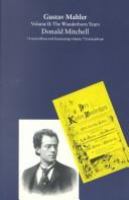 Gustav Mahler : songs and symphonies of life and death : interpretations and annotations / Mitchell, Donald
Gustav Mahler : songs and symphonies of life and death : interpretations and annotations / Mitchell, Donald
Donald Mitchell (1925-2017) was a pioneering Mahler scholar, his research and writing on his subject spanned many decades, and was frequently revised and updated. Songs and Symphonies of Life and Death (1985) followed on the heels of two groundbreaking studies, Gustav Mahler: the Early Years (1958) and Gustav Mahler: The Wunderhorn Years (1975). Mitchell’s Songs and Symphonies of Life and Death focuses on Mahler’s vocal music, with a deep discussion of Das Lied von der Erde that illuminates the composer’s sketches and process, his interpretation of the poetic texts, and the personal significance of this monumental work.
Continue reading “Songs and colours of water and earth: Mahler, Schoenberg, and Orchestra Wellington” →


